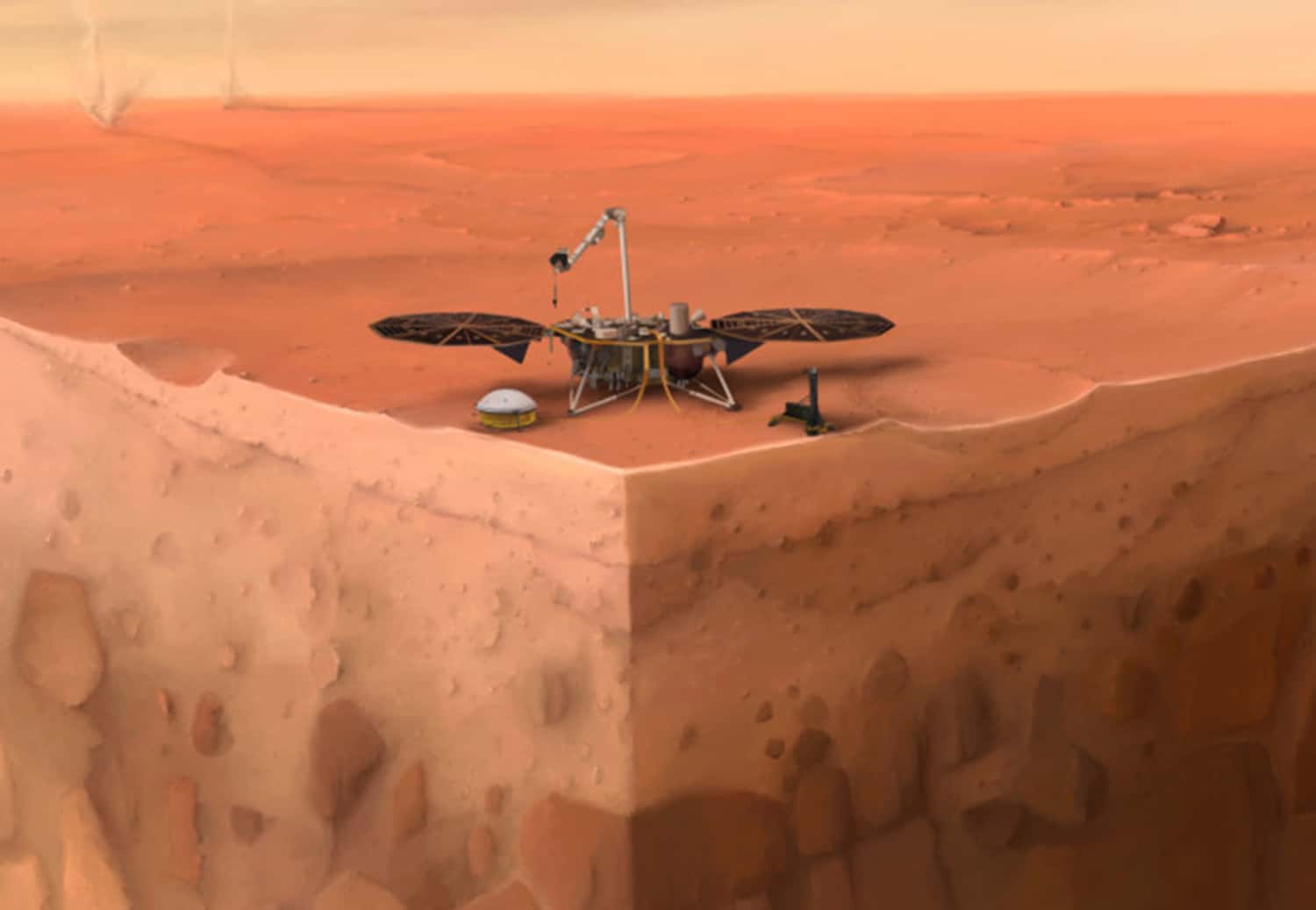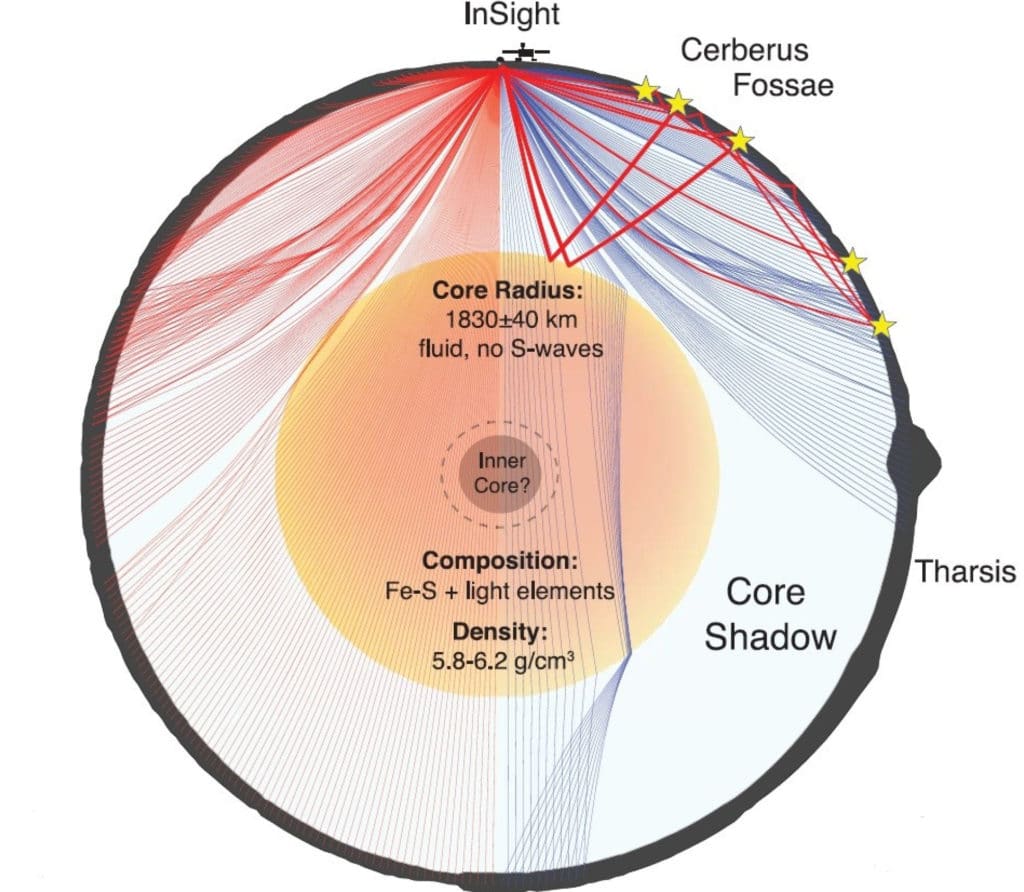
The only thing scientists know about the Martian interior is that it has a core with a radius of between 1500 and 2100 km. The interior of Mars is one of the big unknowns. Because of the lack of direct seismic observations, the interior structure of Mars has been a mystery.
Understanding Mars’s interior is essential because it will contribute to understanding the formation of the Martian atmosphere, its habitability, and ultimately its evolution.
On Earth, a global network of seismic sensors is used to study the interior of our planet. The sensors measure seismic waves that travel through the layers of the planet following earthquakes. Based on those signals, scientists determine the properties of the layers, including the mantle, the liquid outer core, and the solid inner core.
For the first time, NASA’s InSight mission has revealed the Mars interior using seismometers. For 2 years, the InSight lander has been recording seismic data from the Upper mantle structure of Mars that are vital to constrain the structure and thermochemical state of the planet.
Using seismic measurements from the SEIS instruments aboard the InSight lander, scientists derived the interior of Mars and also got clues on the planet’s evolution.
Scientists analyzed the signals and untangled the seismic waves that traveled through the planet from distant marsquakes. Some waves reflected off what appears to be a rather larger core of Mars than expected.

This indicates that Mars has a higher proportion of lighter elements than expected. The results point to a cool, more sluggish early mantle, with more heat instead produced in the crust than had been previously estimated.
Professor Tom Pike from the Department of Electrical and Electronic Engineering at Imperial said, “This is our first comprehensive take on how our observations on Mars can be interpreted as revealing the deep interior of another planet.”
“The instruments have had to detect the very smallest of vibrations, far below the stronger signals detected on Earth from quakes thousands of miles away. It has been extremely challenging to disentangle the seismic signal from the Mars background, and without the performance of instruments exceeding our goals, this work would have been impossible.”
“As with the Apollo seismic investigation of the Moon, we expect seismologists to be examining this data for decades to come: this work represents the dawn of the new age of planetary seismology.”
Journal Reference:
- Amir Khan et al. Upper mantle structure of Mars from InSight seismic data. DOI: 10.1126/science.abf2966
Continue reading Mars interior revealed for the first time on Tech Explorist.
0 comments:
Post a Comment